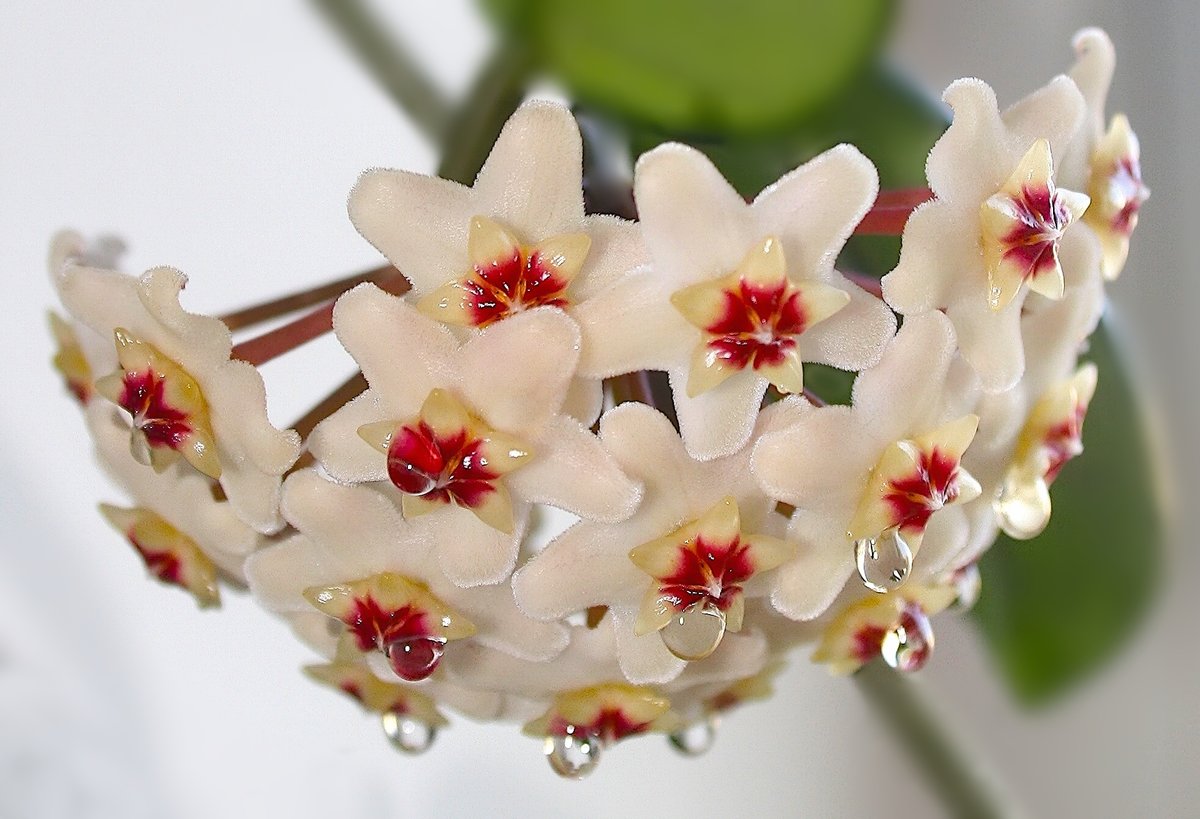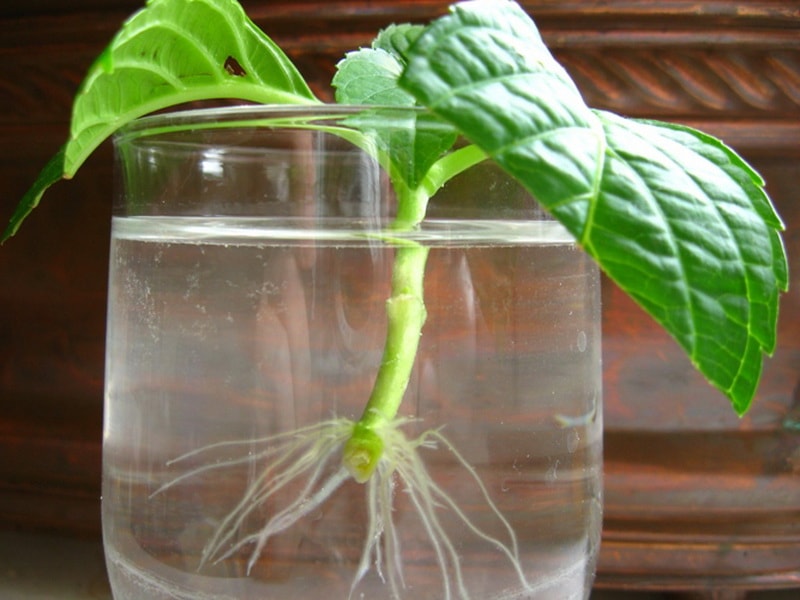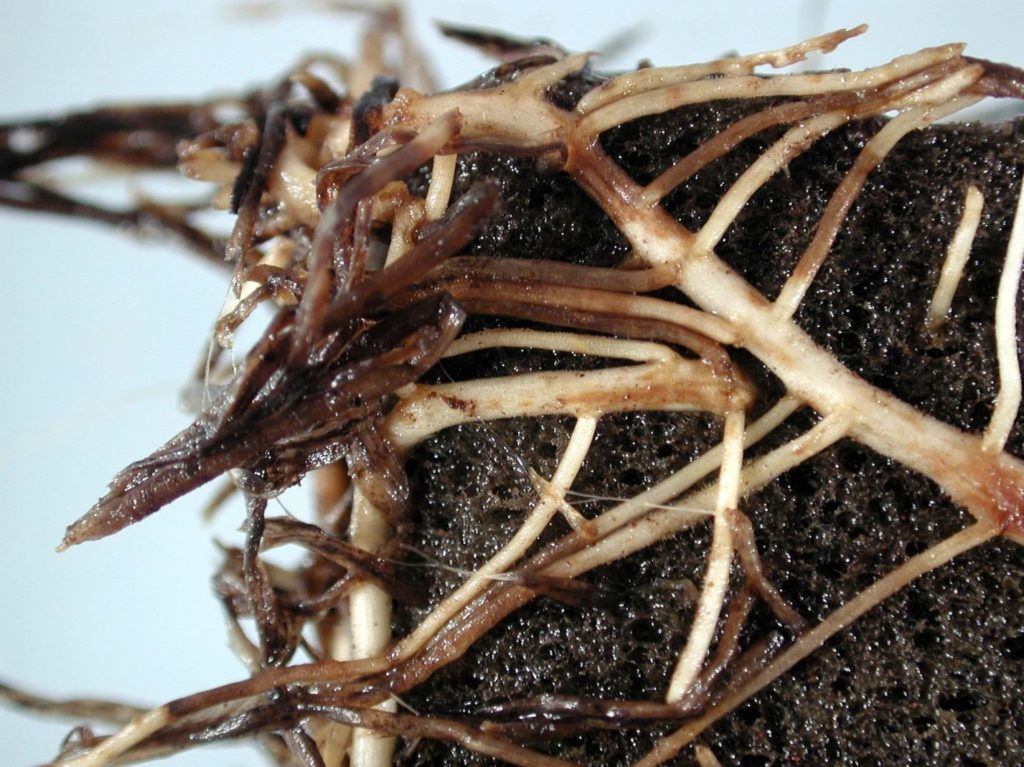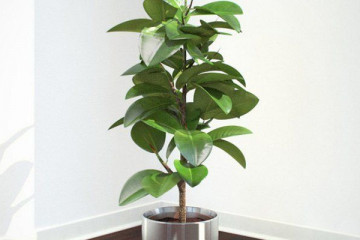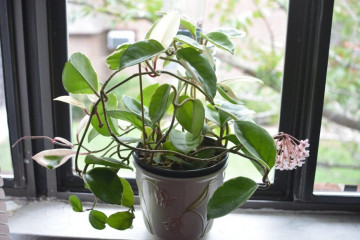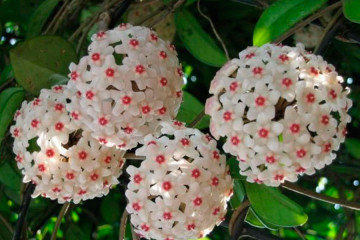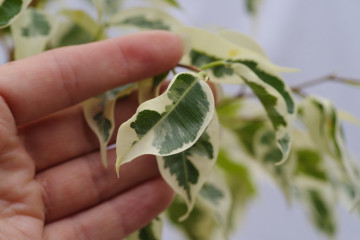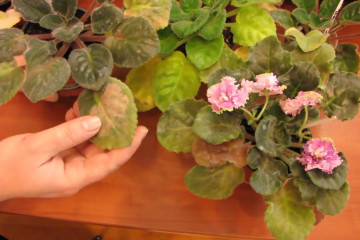Hoya home care, diseases and pests
Content:
Everyone knows ficuses and orchids, but the hoya flower remains not very famous. Its distinctive feature is that, looking at the leaves, it seems that wax has been applied to them. What else is good about this beautiful specimen - the answer is below.
Hoya: home care
The plant belongs to the Kutrovy family, the Lastovnev subfamily. The climatic zone of China or India is excellent for the plant. Often the flower grows in South Korea and on some islands. Despite this, the hoya is not very whimsical to care for.
How to care for a hoya
Caring for a fleshy hoya flower at home is not difficult. This plant is most commonly used as a pet. For him and for other species of these beautiful plants, you need to comply with some requirements:
- monitor the quality and frequency of watering. The plant loves water, so it is required to water the flower as the soil in the pot dries out. In summer, the amount of water increases, decreasing only in November. The rarest watering in winter. After irrigation, you need to wait until the topsoil dries up;
- watering should not be done with cold water. It is defended in advance on the windowsill;
- it is required to choose a not very large pot for planting a flower. There are no special requirements for the choice of container material. The main thing is that it should not be toxic;
- the plant requires drainage holes at the bottom of the pot and a specially prepared soil mixture;
- for cultivation, the east or west window is used, and in cold weather - the south;
- the flower should not be frequently carried from place to place;
- the ideal temperature for him is 20-30 ° C, but the room must be ventilated.
If you follow such simple rules, growing hoya will turn into a sheer pleasure.
Ways and features of planting a home hoya
You can choose any pot, but it is better to take one in which drainage holes are provided. In this case, it is necessary to take into account what is more important - getting shoots or lush flowering. Based on this, buy either a large pot or a small one.
When planting in a large pot, the growth of shoots will be stimulated, in a small one, it will be better to bloom. The difference between the old and new pots should be several centimeters in diameter.
For planting, you should prepare a pot and clean tools for work, so the latter should be pre-disinfected. Drainage should also be prepared. It is laid as the base of the pot in the first layer so that the roots of the plant do not stagnate in the water.
As a rule, turf, humus and peat are used as soil in a ratio of 3: 2: 2. You can add a layer of moss for better moisture. The acidity index of the soil should not be higher than 6.5.
When planting, the shoot is placed in the soil and fixed. For this, you can use something like a wire. You need to wait for the formation of roots and only then break the connection with the main vine.
For propagation by cuttings, a twig with several pairs of leaves is needed. Slices must be disinfected. The stalk is placed in warm water. After the appearance of strong roots, it is planted in the ground. Flowering with this method will come a little later (after a few years).
Hoya pruning
Hoya ivy does not need a lot of pruning.If the branches are too long, you should shorten them a little, and the extra leaves are pinched from above. Colored parts must not be removed. For trimming, special processed tools are used.
Fertilizers
When planting or transplanting, a small amount of coal is added to the substrate. Woody will do.
Top dressing is applied 2 times a month. This should not be done in winter.
If there is any doubt about the amount required to fertilize the plants, it is better to use small concentrations. You cannot exceed the norm. When feeding, fertilizer is used for orchids.
The main nutrient deficiencies for the plant are phosphorus, nitrogen and potassium. Indoor flowering plant food maintains the ratio of these elements. Fertilization should be regular.
Lighting
Flowering directly depends on the light, but at the same time, direct sunlight should not fall on the pot. Getting too much light can cause the plant to burn. With a small amount of light, it will discard peduncles and will not bloom after rest.
Watering
Watering should be uniform. The flower does not tolerate drought or excess moisture. The main guarantee of success is the regularity of watering, but you should not adhere to any specific schedule. Watering is done when the soil on top becomes dry.
Why do the leaves of a flower turn yellow
If the leaves of the hoya turn yellow, you need to urgently help the plant. To do this, first, the cause of yellowing is established, of which there may be several:
- being in hot direct sunlight during rush hours causes yellowing of the leaf plate. Specks of a brown tint are formed over the entire area. For some varieties, the specks may be reddish in color. To eliminate it, you need to create partial shade for this period of time;
- yellowing of leaves can also be caused by too much watering. Especially if it is produced after a dry period. After the leaf has withered and turned yellow, it will fall off. The plant can only be saved by transplanting. The root system is cleaned, the roots are transplanted only after treatment in a weak solution of potassium permanganate;
- dried leaves indicate that the air temperature is too high. However, it may be normal, but the air is dry. The plant should not be watered too often, it should be sprayed with a spray bottle. For hoya, the optimum temperature is 20 ° C;
- if the leaves fall, there may be several reasons: open windows in cool weather, lack or insufficient amount of feeding, a small amount of sunlight. A large amount of moisture, a change in care conditions (for example, a change in lighting or temperature) can also affect;
- pests can start on the flower. In this case, various spots will form. Resuscitation methods will depend on the disease or type of parasite.
Hoya: diseases and pests
Indoor hoya flowers are susceptible to diseases and pests, like all plants:
- withering. It occurs due to the ingress of bacteria that retain moisture. The disease originates from the top of the plant, going down gradually. Treatment with insecticides will help;
- spotting. Bacteria are also a source of formation. The foliage dies off, and before that, small specks form on it. The area of the spot increases, gradually the leaf turns yellow. The stain may resemble glass and may have an oily texture. An environment that is too humid will make the problem worse. As in the first case, insecticides will help;
- rot. The source of rot is violated rules of care. It spreads very quickly. The disease cannot be cured;
- anthracnose. Leaves are affected first. The disease manifests itself in the form of yellowish spots. At the initial stage, this is a small point, invisible to the naked eye. As the disease progresses and the fungus multiplies, the spots will grow, and holes will form in their place. The source is excess moisture in warm air. It is also possible that the plant was sprayed, but the excess water was not removed from the leaves. Fertilizers with mineral elements will help correct the situation;
- gray rot. A white bloom forms on the leaves and stems. Usually has a gray (sometimes greenish) tint. The source of parasite ingestion is untreated wounds. As the rot spreads, the plant dies off. There is no cure;
- powdery mildew. It occurs as a result of excessive air humidity. The disease begins with spots that gradually increase in size. The spots may disappear, but will reappear. If you react quickly, there is a chance to get by with rubbing the diseased leaves. In more advanced cases, you will have to use special drugs;
- stroma. Black spots affecting the leaves. They have a convex shape and a characteristic shine. The cause of the disease is a violation of care. Their appearance can be affected by improper illumination, humidity or temperature violations. For treatment, you need to use drugs designed specifically for all types of hoya.
